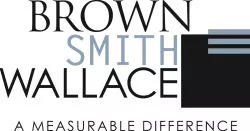Even if you haven't yet received a notice from a Health Insurance Marketplace (often referred to as an "exchange"), it could still happen. The arrival of said document isn't a cause for panic, but every employer should be prepared to take action.
Who Distributes Them
A federal agency called the Center for Consumer Information and Insurance Oversight is charged with administering the Affordable Care Act's (ACA's) Employer Notice Program. You're supposed to be notified when one of your employees has applied for, and been deemed eligible to receive an advance premium tax credit. Bear in mind that you'll receive notification even if, under the law:
- You're exempt from the ACA's shared-responsibility provision because you're not an applicable large employer (ALE) — that is, you have fewer than 50 full-time employees or the equivalent
- The employee wasn't a full-time employee and was ineligible to receive health benefits from you
In either scenario, you probably don't need to do anything.
When the notices are mailed out, they go to the address supplied to the Marketplace by the employee when applying for coverage. For employers with multiple locations, the employee's worksite may not be the same office that handles employee benefits. Therefore, be sure all operating units watch for Marketplace notices and relay them to the appropriate location.
Potential Penalties
If you're an ALE under the ACA, you're probably aware of the potential penalties. As a reminder, a $2,160 annual penalty (multiplied by the number of your full-time employees, minus 30) is calculated on a monthly basis of $180 and is levied against an ALE that:
- Fails to offer minimum essential health coverage to at least 95% of its eligible employees
- Has at least one full-time employee buy coverage from a Marketplace and receive a premium tax credit
(The 95% standard is for plan years that began in 2016; the requirement is 70% for plan years that began in 2015.)
The other "shared responsibility" penalty is $3,240 on an annual basis, charged at $270 monthly for each full-time employee who wasn't offered health coverage that meets minimum value and affordability standards, and who bought coverage from a Marketplace and received tax credit. (Note: An employer cannot be subject to both the 95% [or 70%] standard penalty and the minimum value/affordability penalty at the same time.)
Like most employers, you more than likely know whether you're offering coverage to at least 95% (or 70%) of eligible employees. However, you should also regularly verify that you're satisfying the minimum value test — in other words, your plan covers at least 60% of the total allowed cost of benefits that are expected to be incurred under the plan.
In addition, you should do what you can to ensure you're meeting affordability standards. Since you don't know what your employees' household income is, you cannot know for sure whether your plan passes the affordability test unless you use one of the IRS safe harbors. (The basic standard for 2016 is that the employee's contribution can't exceed 9.66% of household coverage based on the cost of self-only coverage.) That means that, if an employee has sought and been deemed eligible for a tax credit based on the affordability test, you can't know for sure whether the employee is indeed eligible.
Enforcement Tracks
The good news is that the Employer Notice Program and the process for determining ACA penalties operate on separate tracks. Still, you can think of getting such a notice as a heads-up to determine, as best you can, whether you're actually in violation of your ACA shared-responsibility obligations — again, assuming you are an ALE.
There's a reasonable possibility that a notice will be a false alarm. Marketplaces don't verify the information contained in an individual's application for tax-subsidized coverage. Rather, the IRS reconciles employees' claims with their personal tax return data, including W-2 information.
The employee could make mistakes in the application, or possibly even knowingly include inaccurate data to game the system and get excessively subsidized coverage. Doing so could be accomplished by:
- Understating household income
- Overstating what the employee would have to contribute to secure employer coverage
- Asserting that employer coverage simply isn't available
It's also possible that the employee accurately stated that no employer coverage was available. Again, even if you're not an ALE and therefore are not required to provide coverage, the Marketplace will still send you a notice.
Three Responsive Scenarios
Whether employees are playing it straight or not, there are several scenarios in which getting a notice should elicit a response from you. Three in particular include:
- You're an enterprise with multiple locations and you're inundated with notices from one location or division. This typically indicates some kind of benefits administration breakdown. You should conduct an investigation focusing on that particular unit.
- You receive a notice regarding an employee who's enrolled in your health plan. Again, an internal investigation is necessary. Start by talking to the employee in question.
- You receive a notice regarding someone who no longer works for you, or perhaps never did. In this case, you'll want to get in touch with the Marketplace and determine why this person has identified your company as his or her employer.
The ACA contains an appeals procedure that lets you — within 90 days of receiving a notice — contest the employee's eligibility for subsidies. Doing so may or may not be worth your time because the IRS will investigate your ACA compliance independently of the Employer Notice Program.
One school of thought is that you shouldn't waste your time with an appeal, other than when addressing issues such as the three described above. Another view is that sounding the alarm on an inaccurate characterization of the employee's situation might be helpful evidence of your desire to assist the government in ensuring ACA compliance on everyone's respective parts (including employees). For example, by appealing a notice, you might reduce possible cost to the government of having to reclaim dollars employees received (via tax-subsidized benefits) without being eligible for them.
Your Obligations
Most notices pertaining to employees who secured insurance via the Marketplace as of January 1, 2016, have already been sent, but notices relating to employees who enrolled midyear under special enrollment rules might be headed your way soon. Study up on what your company's obligations might be and consult your benefits advisor for advice on responding appropriately.
If you have questions about marketplace notices, please contact Ron Present, Partner and Health Care Industry Group Leader, at rpresent@bswllc.com or 314.983.1358.
The content of this article is intended to provide a general guide to the subject matter. Specialist advice should be sought about your specific circumstances.

